If you want to try growing an edible garden, you’re in the right place! Learn how to figure out where to plant, pick the correct type of garden (like raised beds or containers), and easily plan your layout. Although growing a garden can be done in a variety of ways, this article will review simple, step-by-step directions for creating raised beds, container gardens, obelisks, and tunnels to help take your green space to the next level. It doesn’t matter if you have an extensive country backyard or a small urban balcony – we’ve got you covered!
An edible garden can be a small garden in your yard or just a few simple containers on your balcony. Among the best edible plants to grow are artichokes, tomatoes, garlic, chamomile, and beans. Growing an edible garden also offers several benefits, including providing fresh, organic produce, saving money on groceries, and reducing your carbon footprint.
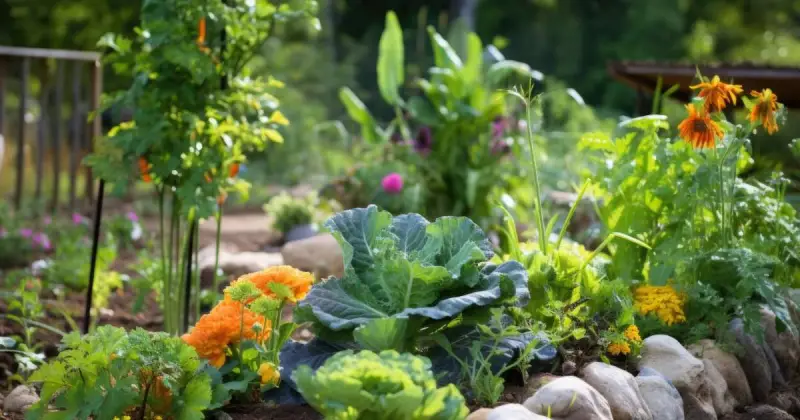
Today, I will share my insights on edible gardening and provide the advantages of homegrown food and some of its surprising downsides. You’ll pick up some practical tips for crafting an edible landscape and ensure you’re well-prepared to kickstart your food garden without straining your budget, with tremendous rewards in store.
I will also provide a comprehensive list of plants to start your backyard or kitchen garden. So, keep reading, and let’s embark on this exciting adventure together so you can create and enjoy a garden overflowing with fresh, homegrown delights!
Humble Highlights
- Discover the 7 empowering benefits of creating your edible garden to boost food independence and sustainability no matter where you live or what region you reside.
- Save time by understanding these 4 popular and proven design methods for mind-blowing and breathtaking edible gardens so you can grow more with less hassle starting today!
- Stop guessing how to care for your plants and soil and start discovering how easy it can be with these outrageously simple secrets – while saving money!
Benefits Of Growing An Edible Garden
Growing an edible garden comes with many advantages. Some of the most common benefits you can get from cultivating your own fresh foods include:
- Control over food quality: You have control over the quality of your food, ensuring it’s healthy and free from pesticides.
- Cost savings: Growing vegetables and herbs can save you money on groceries, particularly for frequently used items.
- Reduced carbon footprint: Homegrown food reduces your carbon footprint by reducing the distance your food travels from the farm to your table.
- Fresh and healthy produce: You can harvest fresh, organic produce with no chemical additives, ensuring high-quality and healthy ingredients for your meals.
- Encourages physical activity: Gardening provides a low-impact form of physical exercise, which can be both enjoyable and beneficial for your health.
- Self-sufficiency: Planting an edible garden can enhance self-sufficiency and resilience, especially during food scarcity or supply chain disruptions. 1
- Superior taste and flavor: Growing your food offers superior taste, aroma, and culinary quality compared to store-bought options, fostering a more intimate connection with your food.
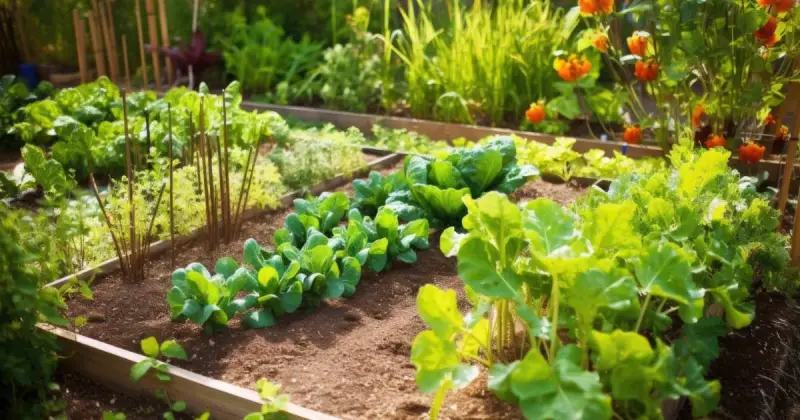
Designing An Edible Garden In Your Yard
When designing an edible garden, there are a few things to consider. First, you need to assess the available space and sunlight. Most healthy plants will grow under full sun and need at least 6 to 8 hours of sunlight daily. So, choose a location with adequate daylight, which can be anything from your backyard, balcony, patio, or windowsill.
Secondly, decide on the type of garden you want. You can create a garden in raised beds, containers, and vertical gardens. There are also other alternative options like obelisks and tunnels, and their designs are further discussed below.
Raised Beds
Raised beds are an excellent choice for creating an edible garden space. These elevated boxes, often made of wood or galvanized metal, offer numerous advantages for growing fruits, vegetables, and herbs.

One of the primary benefits is improved soil drainage, as water can drain freely, preventing waterlogged roots and ensuring healthier greeneries. These beds also control soil quality, making it easier to amend and maintain nutrient-rich soil tailored to your specific crops. The raised structure can also help deter harmful intruders, critters, or insects and keep weeds at bay. 3
Quick Steps:
- Decide the size and shape of your raised beds to fit your space and goals. One or two 4×10-foot beds can be sufficient for beginners and manageable for the novice grower.
- Ensure a 12-18 inches depth for root growth and fill with quality soil. You’ll want a minimum of at least 6 inches for shallow-rooting veggies like green leafy lettuces.
- Remove debris like rocks or sticks and rake back and forth in a crisscross pattern to ensure the soil is evenly distributed.
- Grow your seeds following the proper spacing and depth recommendations. For instance, if you’re planting tomatoes, ensure they’re spaced about 18-24 inches apart and bury the seeds at a depth of approximately 1/4 to 1/2 inch.
- Apply organic mulch, monitor for nutrient needs, and prune and thin them as they grow.
Container Gardening
If you have a small space, container gardening is a great option. You can use containers such as pots, window boxes, or even repurposed and DIY items. Consider herbs and cherry tomatoes in these containers because herbs generally only require a little space. Just provide adequate drainage holes and fill them with high-quality potting soil.
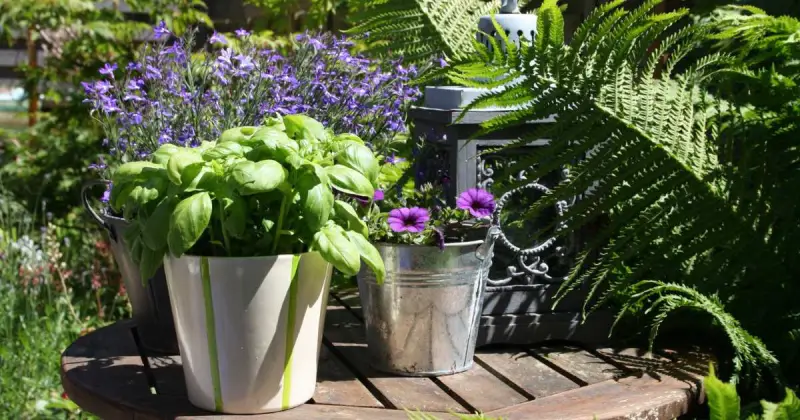
Quick Steps:
- Select containers with drainage holes, like pots or window boxes.
- Opt for herbs, small veggies, or dwarf fruit varieties like mint, bush beans, or citrus trees.
- Fill containers with potting mix such as peat moss, perlite, vermiculite, and sometimes compost, leaving space at the top.
- Water thoroughly, keeping the soil moist but not saturated.
- Place containers in a sunny spot with 6 to 8 hours of sunlight.
- Apply fertilizer as needed, mulch for moisture, regularly water, prune, and watch for pests or diseases. 4
Obelisks
Obelisks serve a dual purpose in the garden. They support climbing plants like roses and serve as decorative focal points while offering sturdy support for vines, ensuring upright growth and improved exposure to sunlight, which makes them simpler to maintain.

Additionally, these structures are visually appealing and can transform a garden into an enchanting space, serving as eye-catching focal points that enhance the overall aesthetic and charm of the landscape.
Quick Steps:
- Purchase or construct sturdy and appropriately sized obelisks for your desired edibles.
- You can find obelisks made of metal, wood, or other materials at garden supply stores.
- Also, consider building your obelisks using materials like PVC pipes or wooden dowels.
- Place the obelisk in a sunny spot within your community garden.
- Prepare the soil by adding organic matter for better drainage and fertility.
- Plant your chosen climbing edibles, like beans or grapes, at the base of the obelisks.
- Help them climb using twine, ties, or trellis netting as they grow.
- Keep soil moist, fertilize as needed, and prune for upward growth and disease prevention. Harvest when ripe.
Edible gardening is a smart way to grow fresh food while allowing your green space to retain that classic curb appeal look and feel. As the video below explains, ensure the plants you cultivate flourish in your region’s climate while harvesting practically and efficiently, which allows your greenery to survive.
Tunnels
Tunnels are versatile structures that extend your growing season by creating a micro-climate, protecting your choice of crops from harsh weather conditions, and allowing for year-round cultivation. You can choose a low or high tunnel hoop houses (tall structures with greenhouse-grade plastic) or polytunnels (made of steel or aluminum).
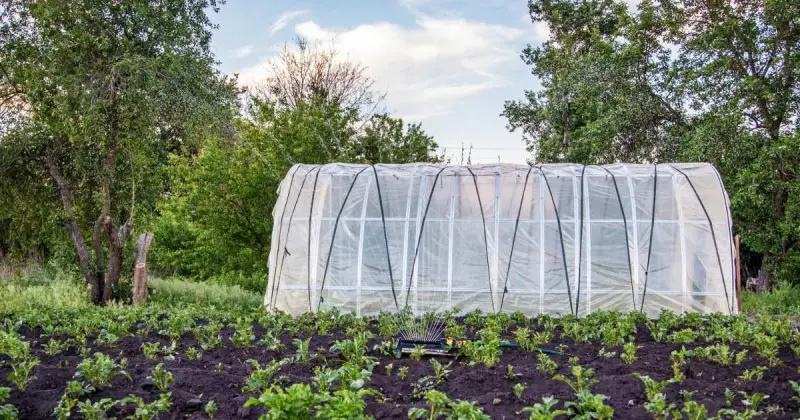
By acting as a shield against such environmental challenges, tunnels ensure your greens remain sheltered and thrive, even in less favorable conditions, climates, and regions. 5
Quick Steps:
- Choose a suitable tunnel structure for your climate and space, such as a hoop house or polytunnel.
- Depending on the size of your garden and the material you’re using, you may need to install support structures.
- You can use wire hoops or PVC pipes bent into arches for smaller tunnels or row covers, while larger structures might require wooden or metal frames.
- Sow your desired crops in rows beneath the tunnel.
- Provide consistent watering and use drip irrigation or soaker hoses for efficiency. Apply mulch for moisture retention and weed control.
- If necessary, use bricks, stones, or soil to anchor the edges of the material to the ground to prevent it from lifting in the wind.
Popular Edibles For Your First Edible Garden
There are countless edible plants to choose from for your garden. Some popular options include lettuce, kale, squash, beans, and peppers. They are relatively easy to grow and offer a bountiful harvest. Additionally, berries such as strawberries and blueberries remain popular with growers and can be a great addition, providing delicious treats throughout the season.
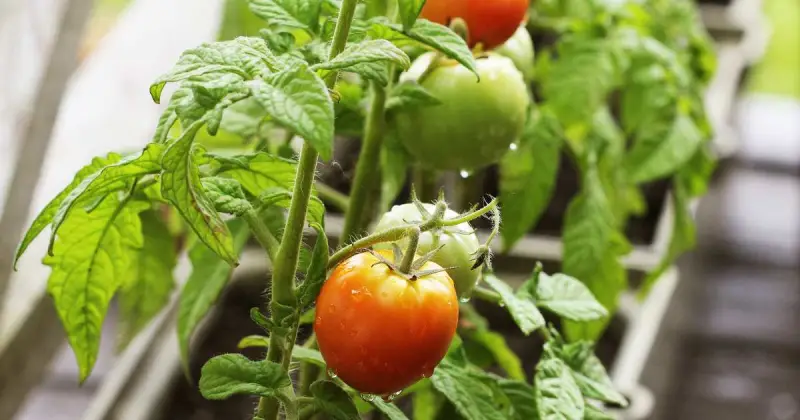
You can usually find seeds or seedlings for various greens at your local nursery or hardware store. However, it’s important to note that the availability of specific seeds or seedlings may vary depending on the season and location. So, you must still check with your local nursery or store for their current offerings. 6
Edible Garden Flowers
An edible flower garden is an excellent addition to your outdoor space, offering visual beauty and the opportunity to enhance your culinary creations with vibrant, flavorful blooms.
In fact, there are so many edible flowers you can cultivate. I’ve written an entire article about this fun and innovative practice. In the meantime, here are some popular flowers that can be grown and eaten right in your backyard:
- Angelica (petals)
- Bee Balm (flowers)
- Calendula (flowers)
- Carnations/Dianthus (petals)
- Jerusalem artichoke (tubers)
- Nasturtium (leaves, flowers)
- Sunflower (sprouts, seeds)
- Viola/Pansy (leaves, flowers)
Delicious Herbs
Herbs are a must-have in any edible garden. They add flavor to your dishes and attract beneficial insects and pollinators to your garden.
Some common herbs to consider growing:
- Basil
- Rosemary
- Parsley
- Chives
- Mint
- Thyme
- Oregano
- Cilantro
These herbs can be used in various dishes and have unique flavors that enhance the taste of your food.
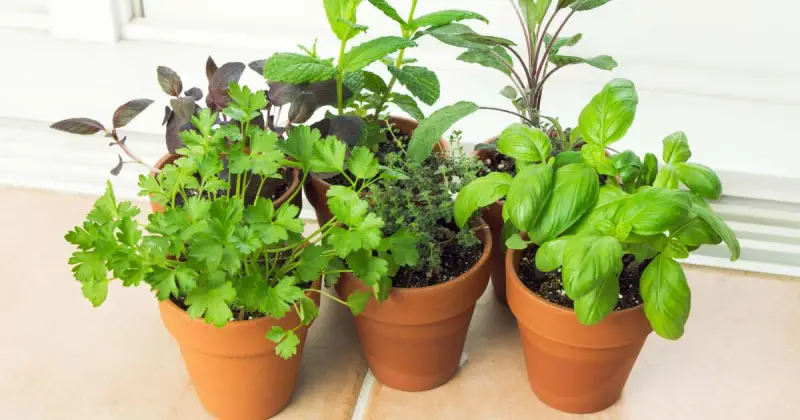
Garden Vegetables
It’s best to choose fresh veggies that grow well in your region, adapt to your temperatures, and suit your taste preferences. Consider factors like the time it takes for the vegetables to mature, the amount of space they require, and their resistance to harmful insects, bugs, and diseases.
Some popular vegetable choices include:
- Tomatoes
- Cucumbers
- Zucchini
- Carrots
- Chard
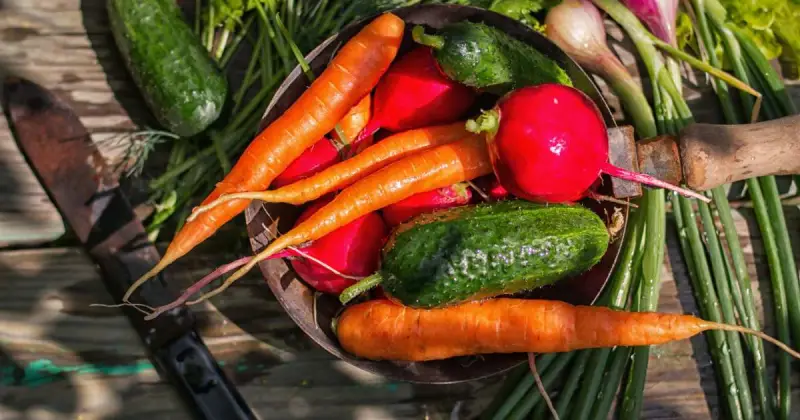
Ornamental Veggies
These vegetables produce tasty and nutritious crops and feature striking foliage, vibrant colors, or unique growth habits, making them visually and aesthetically appealing.
- Rainbow Swiss Chard
- Purple Basil
- Red Romaine Lettuce
- Kale (Dinosaur Kale)
Best Plants For Edible Gardens
An edible garden can be both beautiful and functional. Some flowers and herbs can infuse teas, such as chamomile for a calming note or lavender for a soothing aroma in herbal infusions. At the same time, others can also be incorporated into smoothies, like hibiscus or violets, to add unique flavors and a pop of nutrition to your morning routine.

Consider these top plants for your garden:
- Marigold: Its petals are often used in culinary applications. They have a slightly spicy and citrus flavor and can be added to salads and rice dishes or used as a colorful garnish. In fact, these blooms are so common in backyard gardens that I’ve taken the time to write an entire article about the popular and edible marigold here.
- Artichoke: Produce large, flavorful flower buds that are harvested and eaten. They are low in calories and rich in fiber, antioxidants, and vitamins and minerals.
- Allium species (onion, garlic, chives): Add depth and aroma to various dishes and have potential health benefits, such as immune support and antioxidant properties.
- Borage: They are often used as a garnish or in salads and are visually appealing and tasty. Interstingly, Borage has a mild yet refreshing cucumber-like flavor. 7
- Chamomile: This popular herb is known for its calming properties in herbal teas.
Other Garden Plants To Consider
There are several other garden plants you can also consider for edible purposes, including:
- Hibiscus flowers: Hibiscus flowers often make herbal teas, jams, and jellies. Want to know how you can create these delicacies? Check out this relevant article on how to start growing and eating hibiscus flowers.
- Mint: Mint is aromatic and perfect for making teas and desserts or incorporating them into various savory dishes.
- Rosemary: Adds a robust flavor to various dishes, especially meats and roasted veggies.
- Lemon Verbena: Lemon verbena leaves are fragrant and can be used to make herbal teas or flavor desserts.
- Lavender flowers: Known for their potential relaxation and stress-reducing properties.
- Zinnias: Provides colorful blooms in gardens and landscapes throughout the year and, although considered slightly bitter, are entirely edible. Check out this complete article exploring using this versatile bloom as a culinary ingredient.

Plants Not Edible
Numerous plants cannot be eaten because they may contain toxins, have inedible parts, or lack nutritional value. Some examples of non-edible plants include:
- Ornamental shrubs and flowers like roses and tulips.
- While some houseplants have edible parts, many common houseplants, like philodendrons and pothos, are toxic if ingested. 8
- Wild foliage like poisonous berries or leaves.
- Evergreen shrubs, like yew bushes, are toxic if consumed.
Check out the video below, which helps you discover some fantastic ideas for growing your edible garden. Remember, you only need a little room to make it work. However, it is essential to exercise caution and proper identification when considering whether a particular type of foliage is edible, especially if foraging in the wild or experimenting with new varieties.
Begin Growing Your Own Food
Prepare Your Soil
If starting a new garden, consider conducting a soil test to determine its pH level and nutrient content. Based on the results, you may need to make soil amendments to ensure the necessary nutrients are available. 9
The choice of soil additives depends on the particular requirements of the soil and the crops you plan to cultivate. You have a variety of options, including:
- Like kitchen scraps, compost enriches the soil with nutrients, improves water retention, and fosters a healthy microbial community.
- Cow or chicken manure supplies soil nitrogen, phosphorus, and potassium.
- Gypsum breaks up compacted clay soils, enhancing soil structure while providing calcium and sulfur.
- Lime raises the pH of acidic soils, improving nutrient availability.
- Bone meal is a slow-release source of phosphorus and calcium, ideal for developing strong roots in flowering plants.
While other amendments may have specific uses, the ones listed above are generally the most versatile and suitable for a wide range of edible garden crops.
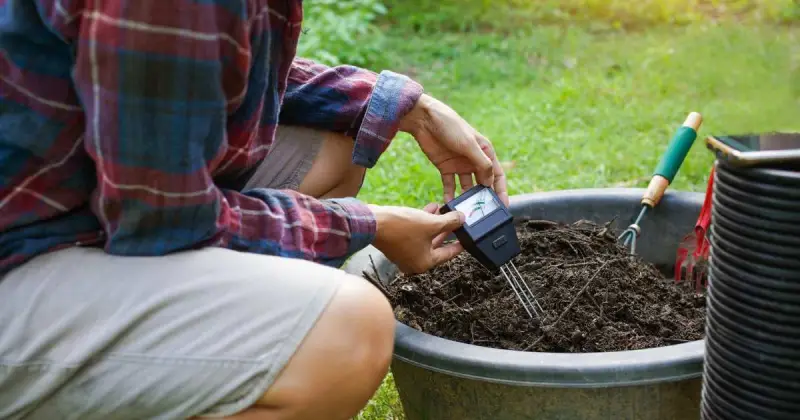
Caring Tips For Your Edible Garden Plants
- Water them regularly, especially during dry spells. The best time to water is early morning for optimal hydration.
- Ensure they receive sufficient sunlight for their growth.
- Use mulch to retain moisture in the soil and prevent weed growth.
- Consider pruning or staking for plants that trail or vine, like tomatoes or squash.
- Watch for harmful critters and diseases, and use organic control methods or companion planting to manage them effectively.
Common Problems In The Garden Site
Dealing With Pests
Common intruders include aphids, slugs, snails, and caterpillars. To manage pests without harming your edibles, consider natural solutions like introducing beneficial insects or using companion planting techniques.
For example, marigolds growing near vegetables can help deter harmful parasites like aphids and nematodes. Nasturtiums, in turn, may draw aphids away from your other crops. 10
Synthetic chemicals and organic pest control products should be used for severe infestations as a last resort. Using organic and synthetic methods in your garden has pros and cons; when choosing one, you should consider the specific problems you face.
| Organic Pros | Organic Cons |
|---|---|
| Environmentally friendly | Slower action in controlling pests/fertility improvement |
| Safer for humans, pets, and surrounding wildlife | Variable effectiveness |
| Improves soil structure, fertility over time | Limited product availability |
| Releases nutrients slowly for steady plant supply | – |
| Supports diverse plant, insect life for garden balance | – |
| Synthetic Pros | Synthetic Cons |
|---|---|
| Quick action for severe pest/disease control | Can cause environmental impact (harmful to ecosystem) |
| Precise control of specific pests/diseases | May impact health (if not used correctly) |
| Widely available, convenient | Short-term solutions (may not address root issues) |
| Uniform nutrient supply for specific plant needs | Soil degradation over time (reduced microbial activity) |
Poor Soil Drainage
Poorly draining soil can lead to soggy roots and root rot. If water is not draining correctly, you can take several steps to improve water runoff.
1. Amending the soil with organic matter, like compost or manure (discussed above).
2. Creating raised garden beds that allow excess water to drain away.
3. Installing a French drain or a dry well to divert excess water away from your green space.
Additional Tips And Ideas
- Consider using drip irrigation systems to provide consistent and efficient watering. This process can save water and reduce and minimize issues of overwatering or underwatering.
- Keep a journal to track the dates, crop varieties, and observations that can help you improve your skills year after year.
- Consider using cold frames, row covers, or greenhouse structures to extend your growing season, especially in regions with short growing seasons.
- You may practice organic methods to reduce the use of synthetic chemicals and promote a healthier, more sustainable.
- Use the companion planting technique to naturally deter pests and promote healthier growth of your leafy greens. 11
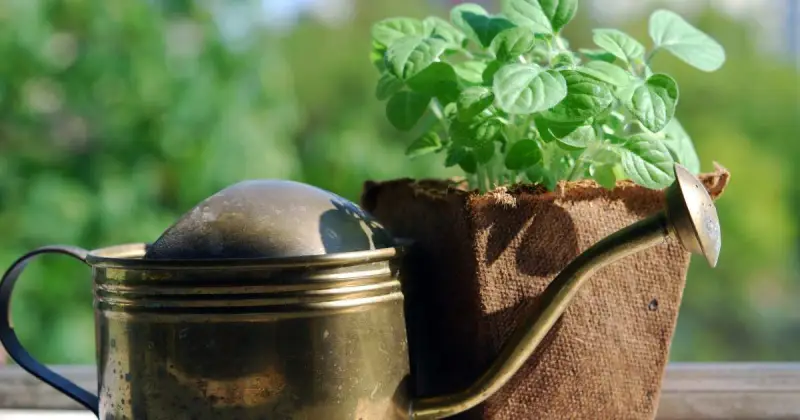
Conclusion
Cultivating homegrown food is a profoundly satisfying and nourishing journey. It’s about the joy of watching tiny seeds sprout and the delight of savoring the flavors of freshly picked produce. Indeed, a special connection grows as you tend to your edible garden.
But it’s not just about taste and nutrition. There’s a sense of accomplishment that comes from successfully nurturing a garden of edibles. And sharing the bountiful harvest with loved ones and neighbors adds even more richness to the experience.
Whether working with a small balcony, a sprawling backyard, or something in between, the possibilities for creating a thriving and beautiful edible garden are endless. So, roll up your sleeves, have fun, and let your green thumbs lead you on this delicious and rewarding adventure.
Are you currently cultivating edibles in your space? We’d love to know which plants you care for in your region. Drop us a quick comment below and let us know your success!
SOURCES
- ScienceDirect – Gardening Is Beneficial For Health – A Meta-Analysis
- MDPI – Promoting The Development Of Edible Landscapes In Suburban Areas With Place Branding – A Case Study In Taiwan
- Wikipedia – Raised Bed Gardening
- Virginia Tech University, Extension – Vegetable Gardening In Containers
- Wikipedia – Polytunnel
- Agriculture & Food Security – Home Gardens: A Promising Approach To Enhance Household Food Security And Wellbeing
- Frontiers – How Many Wild Edible Plants Do We Eat – Their Diversity, Use, And Implications For Sustainable Food System: An Exploratory Analysis In India
- Cambridge University – Occurrence And Diversity Of Poisonous Plants In Urban Community Gardens
- Penn State University – Beginning A Vegetable Garden
- Frontiers – Why Home Gardens Fail In Enhancing Food Security And Dietary Diversity
- Harvard Health Publishing, Harvard Medical School – Backyard Gardening: Grow Your Own Food, Improve Your Health





